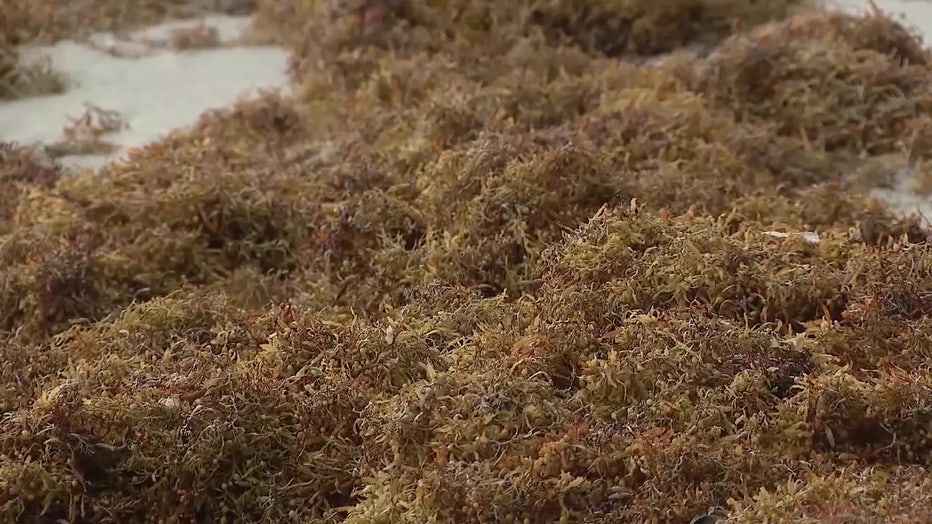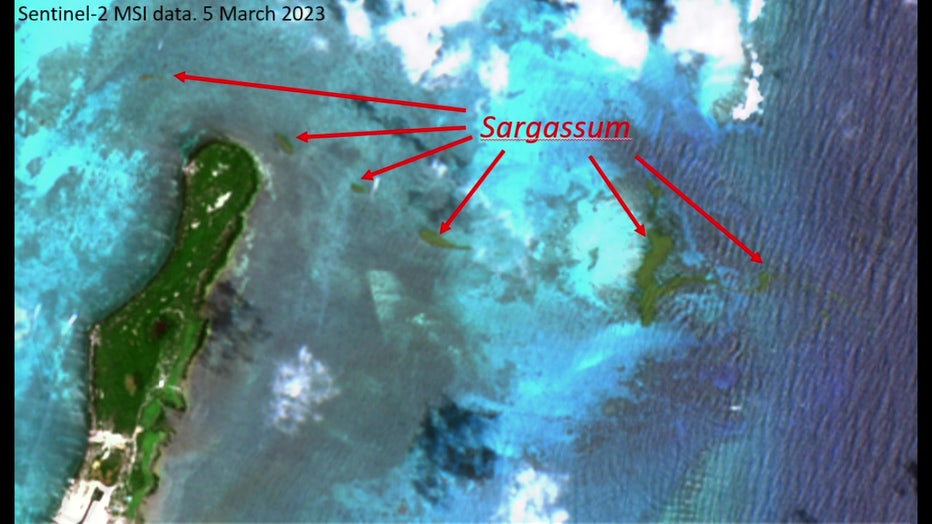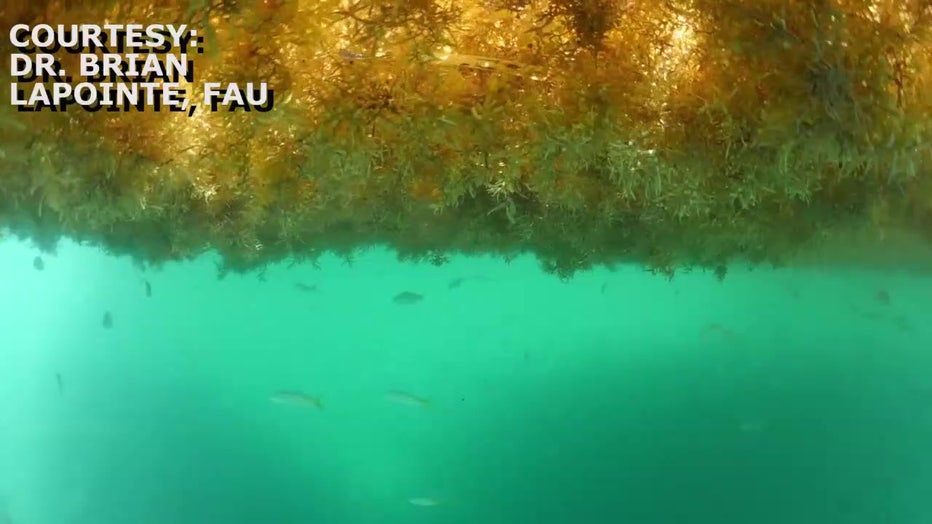Giant 5,000-mile-long seaweed bloom takes aim at Florida

Giant seaweed bloom
A seaweed bloom that stretches from South Africa to the Florida Keys could mean trouble for the environment and infrastructure.
TAMPA, Fla. - Researchers say a 5,000-mile-long seaweed bloom stretching from the shores of West Africa to the Florida Keys could be the largest in history.
It's something researchers have been studying for the last decade and say this year's bloom could pose health risks and cause problems to the environment and infrastructure.
In just the last week, large portions of seaweed made it to Smathers Beach in Key West. The bloom is known as the Great Atlantic Sargassum Belt. Researchers say judging by how large the bloom already is, and it's only March, tells them it's on track to be one of the largest they've ever seen and with that comes major concerns for Florida beaches.

Seaweed on a beach.
One map and photo show the current state of the Great Atlantic Sargassum Belt. High concentrations of the 5,000-mile-long seaweed bloom can be seen in red and stretch from the shores of West Africa to the Gulf of Mexico.
RELATED: Giant blob of seaweed twice the width of US taking aim at Florida, scientists say
"We're already seeing quite a bit of sargassum more than we typically see this early in the year," FAU Harbor Branch Oceanographic Institute research professor Brian LaPointe said.

Is the gigantic seaweed bloom coming to Tampa?
Dave O. the Science Pro explains why the 5,000-mile-long seaweed bloom that?s headed to Florida keeps getting bigger and tells us where he think?s it?ll make landfall.
In another photo of the Gulf of Mexico taken on March 5, you can see the sargassum in green. Another photo taken last June of the Atlantic Ocean shows the sargassum in bright green with every tiny green dot about the size of a football field.

Map of seaweed bloom.
In 2019, the Great Atlantic Sargassum Belt dumped large portions of seaweed on Cocoa Beach and beaches in Miami.
READ: See where red tide is along Gulf Coast Beaches
"We can see it offshore, and we can see it very clearly, and we can even track where it is offshore and where it's going to some extent but trying to pinpoint exactly which beach it's going to go on at That requires the winds and the currents to be just right to push it into a particular area. Theoretically, it's possible that all of it stays offshore and none of it comes into the into any particular beach, but that's not realistic, especially when you have such an aggregation flowing right by," USF College of Marine Science assistant research professor Brian Barnes said.

Seaweed on a beach next to beachgoers.
As Barnes explains, sargassum can block intake valves for things like power plants. Last year, the U.S. Virgin Islands had to issue a state of emergency after large quantities of sargassum caused water shortages.
READ: See where red tide is along Gulf Coast Beaches
It can also pose health risks as Brian LaPoint with Florida Atlantic University explains when seaweed decomposes it releases hydrogen sulfide.

Seaweed in the water.
"That's a toxic gas, so you don't want to be breathing that at high concentrations for long periods of time. That's a health exposure risk," LaPointe said.
As for the likelihood of the bloom making it to Florida's west coast, researchers say because of how the currents and the winds usually operate, Florida's west coast is typically protected from blooms like this, but it's not something they can completely rule out.
Typically, the bloom peaks around May and June.

